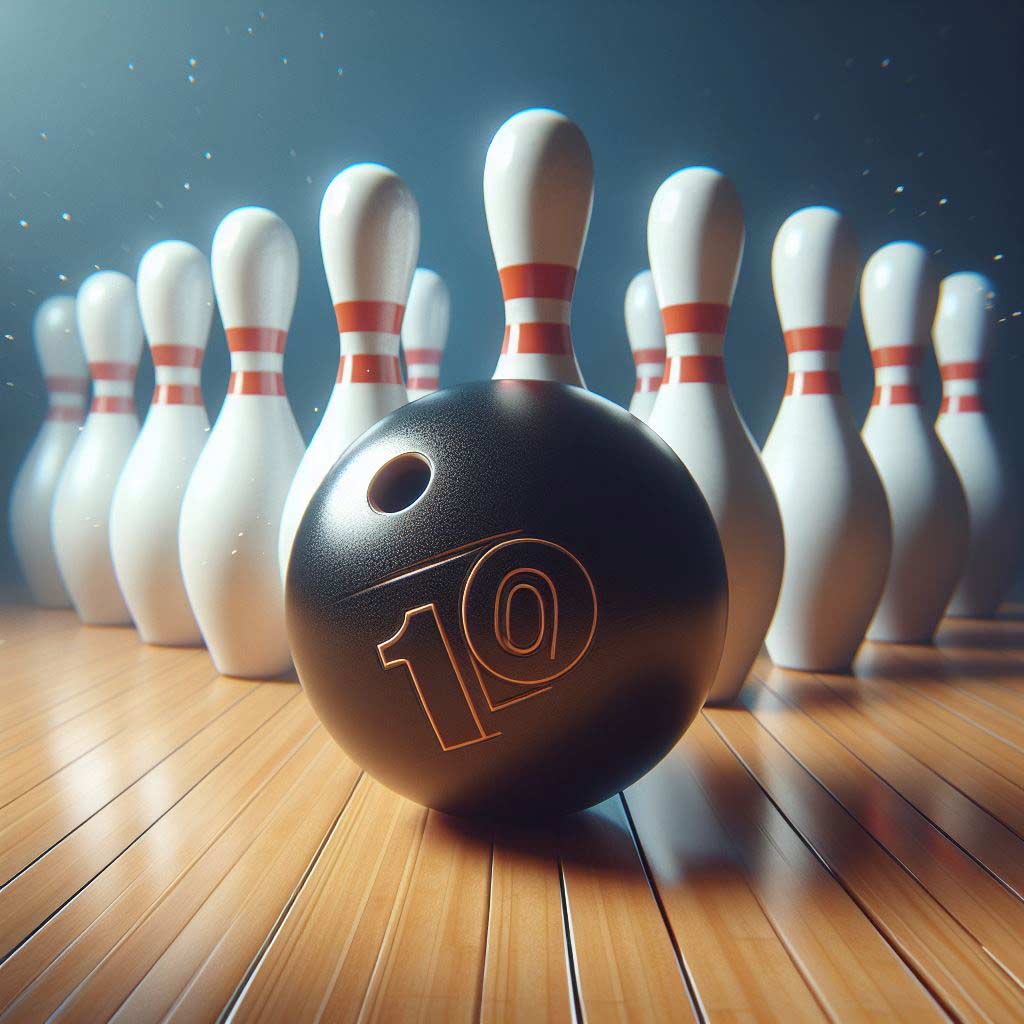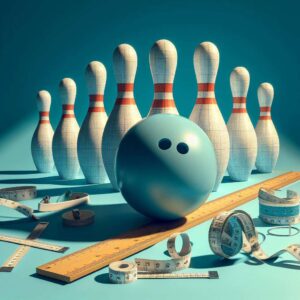Ten pin bowling is a beloved pastime that has captured the hearts of millions worldwide. Whether you’re a seasoned pro or a casual player, the thrill of sending that perfectly weighted ball down the lane, aiming for a strike, is unmatched. However, to truly excel at this game and ensure fair play, it’s crucial to have a solid grasp of the official ten pin bowling rules.
In this comprehensive guide, we’ll delve into the intricacies of ten pin bowling, covering everything from lane etiquette to scoring systems and equipment regulations.
By the end, you’ll be equipped with the knowledge to navigate any bowling alley with confidence, elevating your game while respecting the spirit of this timeless sport.
-
The Basics
At its core, ten pin bowling is a game where players roll a ball down a wooden lane, aiming to knock down all ten pins arranged in a triangular formation at the opposite end. Each player has an opportunity to roll two balls per frame, with a total of ten frames per game.
The objective is straightforward: knock down all ten pins with as few rolls as possible. Players take turns rolling one ball at a time, adhering to the established order. Proper bowling etiquette dictates that you patiently wait for your turn and remain behind the foul line until it’s your time to roll.
-
Lane Courtesy and Etiquette
Speaking of etiquette, ten pin bowling demands a certain level of respect and consideration for your fellow players. It’s essential to stay behind the foul line during your turn and avoid distracting or encroaching on neighboring lanes.
Additionally, while it’s natural to feel excited after a great roll, it’s crucial to remain mindful of your celebrations. Excessive cheering or jumping around can disrupt the focus of others and potentially compromise the safety of those around you.
-
Legal Delivery and Fouls
To ensure a fair game, there are specific rules governing the delivery of the bowling ball. Players must maintain a proper stance and release the ball with one hand, keeping their foot behind the foul line at all times. Stepping over the foul line during the delivery results in a foul, nullifying any pins knocked down during that roll.
Another foul situation arises when the bowling ball crosses into the opposite lane, potentially causing interference or damage. In such cases, the roll is immediately declared a foul, and the player forfeits their remaining rolls for that frame.
-
Scoring System
At the heart of ten pin bowling lies the intricate scoring system, which can be both challenging and rewarding to master. The most coveted rolls are strikes and spares, which earn you bonus points in addition to the pins knocked down.
A strike occurs when you knock down all ten pins with the first roll of a frame, earning you ten points plus the total of your next two rolls. A spare, on the other hand, is achieved when you clear all ten pins using both rolls in a frame, earning you ten points plus the number of pins knocked down on your next roll.
Open frames, where you fail to clear all pins after two rolls, are scored based on the number of pins knocked down. For example, if you knock down six pins on your first roll and three pins on your second roll, your score for that frame would be nine.
To illustrate the scoring system, let’s consider a scenario:
- Frame 1: Strike (10 pins + 5 pins from next roll + 3 pins from the roll after that = 18 points)
- Frame 2: Spare (10 pins + 3 pins from the next roll = 13 points)
- Frame 3: Open frame (6 pins + 2 pins = 8 points)
The ultimate milestone in ten pin bowling is the elusive perfect game, where a player scores 12 consecutive strikes, resulting in a score of 300 points – a feat that demands unwavering skill and consistency.
-
Pin Setup and Fallen Pin Rules
To ensure fair play and consistent conditions, there are specific guidelines for setting up the pins and handling fallen pins during a game. The ten pins must be arranged in a triangular formation, with precise spacing between each pin, before every frame.
If a pin is improperly set or becomes dislodged before the ball is rolled, it is considered “dead wood” and should be reset or removed from play. Similarly, if a pin is knocked down and rebounds to stand back up, it is considered a fallen pin and counts as part of your score.
However, if a pin is knocked off the lane entirely or becomes stuck in the ball return mechanism, it is typically reset for the next roll, unless it was the result of a foul.
-
Equipment Regulations
Just as there are rules for the game itself, there are also regulations governing the equipment used in ten pin bowling. Bowling balls, for instance, must meet specific weight and size requirements, typically ranging from 6 to 16 pounds and with a maximum circumference of 27 inches.
Furthermore, there are limitations on altering the surface of the bowling ball, such as sanding or applying foreign substances, to prevent unfair advantages or damage to the lane surface.
Footwear is another important consideration, with most bowling alleys requiring players to wear specialized bowling shoes or approved footwear with non-marking soles to protect the lane surface.
-
League Play and Tournaments
For those who take their bowling seriously, league play and tournaments offer a competitive and structured environment to showcase their skills. In these settings, additional rules and guidelines come into play.
League play often includes handicap and scratch divisions, ensuring fair competition among players of varying skill levels. Handicap divisions adjust scores based on a player’s average, while scratch divisions rely solely on raw scores.
During tournaments, there are typically strict rules regarding the pace of play, ensuring that games progress efficiently and without unnecessary delays. Substitutions and absentee scores may also be regulated to maintain the integrity of the competition.
-
Marking and Record Keeping
Accurate record-keeping is essential in ten pin bowling, especially in league play and tournaments. Each game must be meticulously recorded in an official scorebook, with scores verified and scoresheets signed by both players or teams.
In the event of scoring discrepancies or errors, there are established protocols for correcting them, often involving the intervention of a qualified judge or tournament official.
-
Bowling Etiquette Beyond Rules
While the rules of ten pin bowling govern the technical aspects of the game, there is an unwritten code of etiquette that every bowler should strive to uphold.
Sportsmanlike conduct, respecting others’ personal space and equipment, and celebrating appropriately are all hallmarks of a true bowling enthusiast.
Conclusion:
Ten pin bowling is more than just a game; it’s a cherished tradition that brings people together in a shared pursuit of skill, camaraderie, and friendly competition.
By mastering the essential rules outlined in this guide, you’ll not only elevate your bowling prowess but also contribute to the spirit of fair play that has made this sport endure for generations.
Remember, the journey to becoming a skilled bowler is a continuous learning process. Embrace the challenges, celebrate your successes, and never stop striving for that elusive perfect game. With dedication, sportsmanship, and a deep respect for the rules, you’ll find that the true joy of ten pin bowling lies in the pursuit itself.
So, grab your bowling ball, lace up your shoes, and step onto the lanes with confidence, armed with the knowledge to navigate any bowling alley like a pro. The path to bowling greatness awaits!





